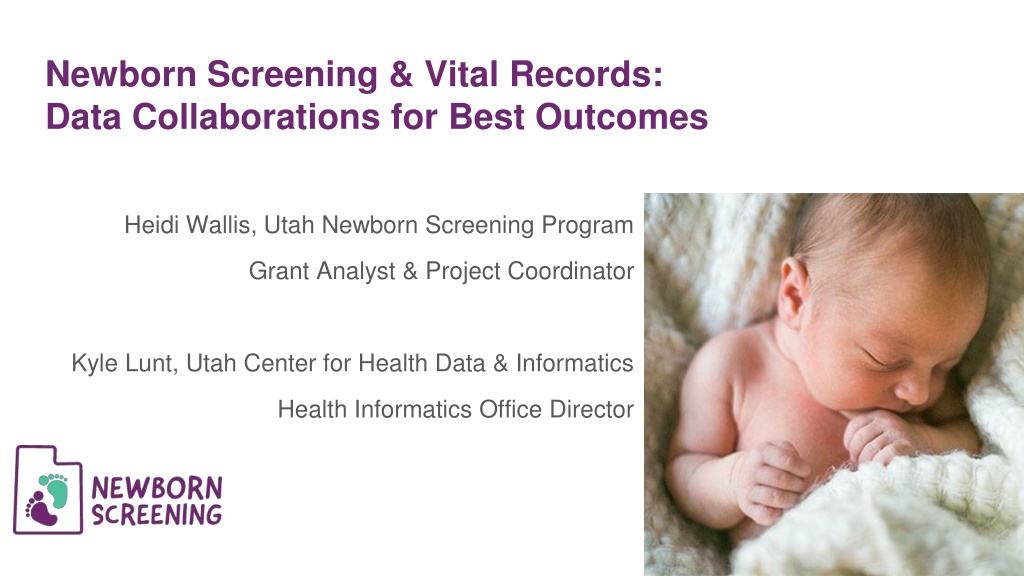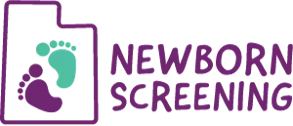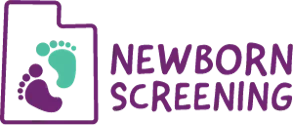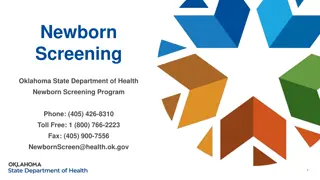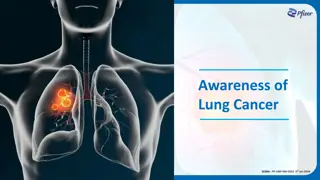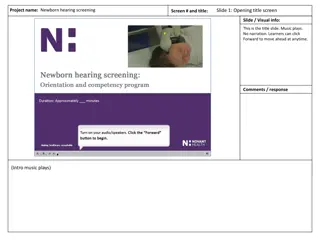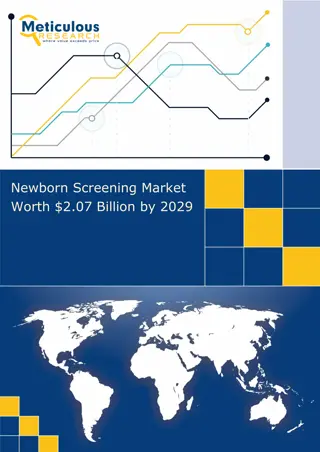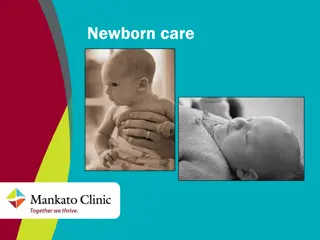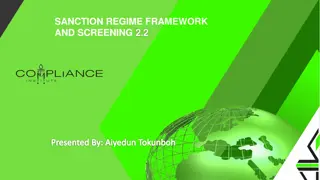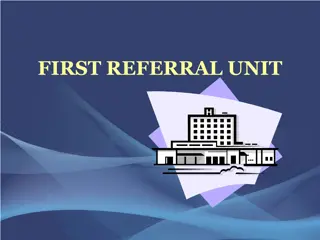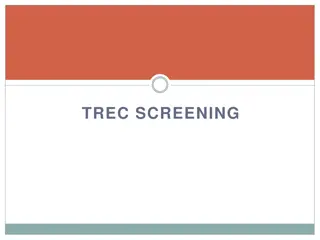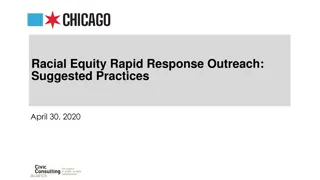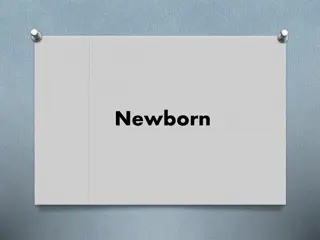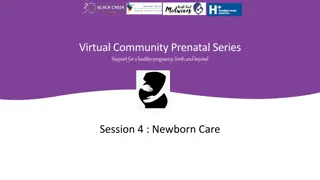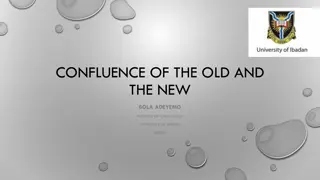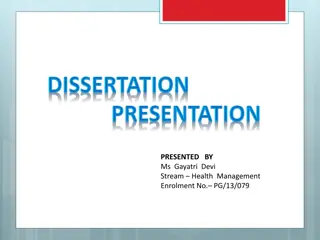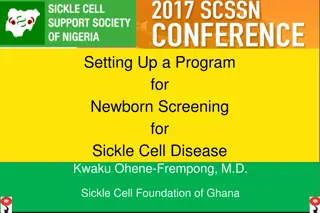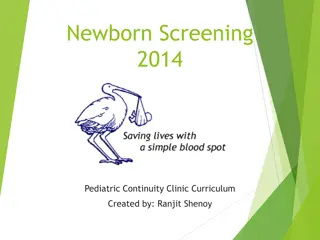Enhancing Newborn Screening Data Collaboration for Improved Outcomes
Collaborating between vital records and newborn screening programs can streamline processes, ensure data accuracy, and enhance overall efficiency. Through interdepartmental relationships, benefits such as verification of unique identifiers, accurate reporting of birth numbers, precise data collection for surveys, and efficient handling of urgent results can be achieved. By leveraging partnerships, organizations can address challenges, improve data operability, and enhance the quality of newborn screening services.
Download Presentation

Please find below an Image/Link to download the presentation.
The content on the website is provided AS IS for your information and personal use only. It may not be sold, licensed, or shared on other websites without obtaining consent from the author. Download presentation by click this link. If you encounter any issues during the download, it is possible that the publisher has removed the file from their server.
E N D
Presentation Transcript
Newborn Screening & Vital Records: Data Collaborations for Best Outcomes Heidi Wallis, Utah Newborn Screening Program Grant Analyst & Project Coordinator Kyle Lunt, Utah Center for Health Data & Informatics Health Informatics Office Director
Interdepartmental relationships are possible! Identify benefits to both parties Newborn Screening Vital Records
Why work together? Case Scenario: 1. Vital Records verifies the NBS kit number a. Unique identifier used across several programs platforms i. Duplicate ii. No kit number iii. Incorrect format
Why work together? Case Scenario: 2. OVRS reports number of births in Utah a. NBS data ensures this information is reported correctly
Why work together? Case Scenario: 3. OVRS data- Pregnancy Risk Assessment Monitoring System (PRAMS) survey a. b. Mother is randomly selected Mother s Contact Information may be i. Incorrect ii. Not provided iii. Change > Adoption
Why work together? Case Scenario: 4. Newborn Screening urgent results a. Information on the card is not always correct i. Typos, changes, blanks Weekends and holidays are especially of concern without HCP support in making contact b.
Past Monthly Microsoft Access reports One user with knowledge of how to run this report against Vital Records information; user left OVRS; code is old Very manual interactions Change of LIMS; Access report not available
Present OVRS sends weekly list Missing kit numbers Duplicate kit numbers Missing mom s info NBS staff manually checks LIMS Only small benefit to NBS > state birth count report is updated Very time consuming
Future Recipient of HRSA grant to improve NBS data operability Funds informaticist to work on project, LIMS updates by vendor & partners to help implement connection and logic with data exchange system Kick off with key stakeholders October 1st Two years to implement an automated solution Collaboration with our Center for Health Data and Informatics Leveraging the DOHMPI system Kyle Lunt, Health Informatics Office Director
Identity Resolution DOHMPI - Department of Health Master Person Index MPI available to all UDOH programs 13 Source Systems live, more in progress Services Record deduplication Record linkage across datasets Notification services NBS Opportunities Enables easier integration Receiving data from others Sending NBS data to others
Benefits of new integration No more manual data cleaning and exchange Save staff time NBS receives infant demographic updates (e.g., baby s first name) Up-to-date reporting and reduction of confusion NBS knows when an infant is born and does not have a screening Education of midwives More babies screened NBS has back up contact information available More ways to find the baby for an urgent result Best outcomes for infants affected by NBS disorders Identifying unregistered infants An infant with a NBS but no birth certificate/state file number OVRS follow up to get family to register Identify better out-of-state birth count
Getting Started Checklist 1. Create a pitch deck of mutual benefits a. What are your needs? b. What can your data to for the other department? 2. Arrange a meeting to share 3. Brainstorm solutions 4. Estimate costs of solution 5. Look for funding if needed
Thank you! heidiwallis@utah.gov kylelunt@utah.gov https://newbornscreening.health.utah.gov/
